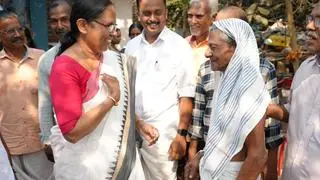Rising affluence will make India the third-largest consumer market by 2025, making it imperative for companies to adapt their business models for meeting the changing customer needs. Consumption expenditure will increase three times to hit $ 4 trillion by 2025, according to a report by the Boston Consulting Group.
From 2016 through 2025, the share of elite and affluent in India’s five household income categories will increase from 8 per cent to 16 per cent of the total while the share of strugglers will drop from 31 per cent to 18 per cent.
As a result, the elite and affluent categories will jointly account for 40 per cent of the consumption as against 27% now. But it is not only wealthy urbanites that will fuel this growth. “In terms of consumption expenditure, emerging cities (with population of less than one million) will be the fastest growing. Fueled by rising affluence, expenditures in these cities are rising by nearly 14% while it is 12% in India’s biggest cities,” the report says.
Consumers in emerging cities behave differently from big-city consumers. As the cities grow larger, the companies will need to segment further within each one to identify small areas of opportunities. “To identify the real pockets of opportunity, marketers need to apply a sophisticated approach to regional segmentation,” BCG suggests.
The report also notes a progressive shift in consumers’ aspirations and spending behaviors. “Immediate gratification is becoming more important than asset creation. Aspirer households are also trading up more frequently in categories such as apparel, buying better brands. With social media playing a big role, people want to fit in with their peers,” the report says.
All this makes it imperative for companies to shed conventional wisdom like opportunities lie in big cities or that India is a male-dominant society. In the past, India was a large mass market characterized by low unit prices. “Companies now need to choose between straddling the full spectrum and focusing on select segments.”
While India as a whole is a growth story, BCG believes that certain market segments benefit particularly from rising incomes. “Companies looking to capitalise on this growth story need to identify the high-growth segments and pockets for their brands and products,” says the report that surveyed 10,000 consumers in 30 locations and studied consumption in more than 50 categories.
On the rising power of women in households, the report says both in urban and rural India, they are exercising far greater influence on their families and society. This, along with increased individualism, has the potential to fundamentally alter how Indian consumers spend. Companies operating under old notions should keep their eyes and ears focused on the changing reality. “Dealing with the changes may require companies to re-think their business models including product offerings, consumer engagement and marketing.”
And above all, companies should develop a robust omni-channel strategy because digital will play a central role in how Indian consumers decide what they will buy and how. “Companies need to think beyond e-commerce because digital’s influence is much larger than simply online spending. They must be prepared to offer an online and offline experience that meets customers’ expectations,” it adds.







Comments
Comments have to be in English, and in full sentences. They cannot be abusive or personal. Please abide by our community guidelines for posting your comments.
We have migrated to a new commenting platform. If you are already a registered user of TheHindu Businessline and logged in, you may continue to engage with our articles. If you do not have an account please register and login to post comments. Users can access their older comments by logging into their accounts on Vuukle.